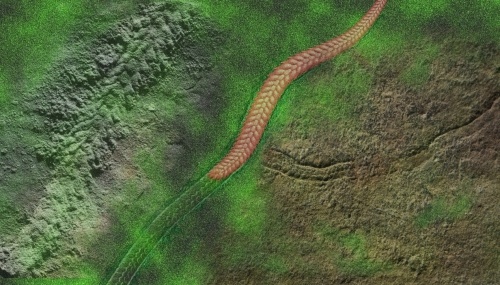Segmented bilaterian animal fossil Yilingia was selected as Top 12 Science New of 2019 in CAS
The development of bilaterally symmetric animals with segmented body structure was a monumental innovation in animal evolution. But when did such organisms first appear Scientists long believed that mobile and segmented bilaterians existed in the Ediacaran Period – immediately preceding the Cambrian – but had no convincing fossil evidence to support this belief.
This changed when a research team, led by Prof. YUAN Xunlai from the State Key Laboratory of Palaeobiology and Stratigraphy, discovered the new fossil Yilingia, which was preserved in ~550-million-year-old rock from the Yangtze Gorges area of China’s Hubei Province. The scientists’ research showed that Yilingia was a segmented bilaterian animal capable of locomotion. This fossil proves that the explosion of bilaterian animals in the Cambrian Period was rooted in an even earlier era. The appearance of motile animals in the Ediacaran period is important because these animals had a profound environmental and ecological impact on the Earth’s surface system, thus laying the foundation for the Cambrian substrate revolution. The research was published in Nature in September 2019.
Recently, this research was selected as ’Top 12 Science New of 2019 in CAS’.
Original link: http://english.cas.cn/Special_Reports/Highlights_of_2019_Top_12_Science_News_in_CAS/202001/t20200116_229524.shtml

Yilingia spiciformis body fossil (left), artist’s reconstruction (middle), and trace fossil (right)
Downfile:

